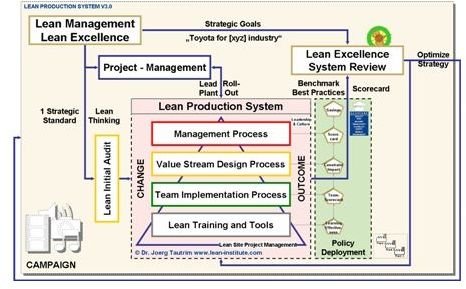What are the Steps in a Lean Manufacturing Project Plan? Find Out Here
Lean project management can help companies improve the manufacturing process by reducing labor costs and cutting down lead times. But, a project management plan needs to be put in place before a company even considers starting down the Lean path. So, what are the steps in a Lean manufacturing project plan?
Goals and Objectives
The first step is to diagnose the problem. Before a problem can be fixed, it needs to be identified and explained. It will be your project goal to solve this manufacturing problem. Once the goal of the project is laid out, it’s time to create the objectives. The objectives will
include the project’s overall point, the schedule, the proposed end result and the total allowed budget.
Once the goals and objectives are defined, it is time to focus on the project deliverables. In the case of Lean manufacturing, it is to make the overall process more efficient. It is also time to figure out which tasks must be done versus which tasks are not necessary to move the entire purpose forward. This list of tasks/processes will then go into the Work Breakdown Structure.
Deal with Multidisciplinary Teams
When implementing a Lean manufacturing project plan, you will be basically converting individuals into multidisciplinary teams. These types of teams work together, but generally focus on finishing different tasks. Since multidisciplinary teams are quite different than what has been done previously, some pushback from team members is going to occur. This is why it is necessary to always involve team members in the planning process, especially when establishing the Work Breakdown Structure. Since they will be doing the work, they should be involved in the planning process.
Creating and Training Teams
If Lean has never been instituted in your organization, you need to train your teams in Lean. This is where the lean manufacturing consultant will assist. Even if your teams have previously used Lean, it would not hurt to have some Lean expert float between teams to ensure that the process is being followed.
Once the teams have been selected, it is time to assign tasks and timelines for completing each task. This will include dividing tasks or process upgrades to individual teams and figuring out which processes will be considered generic or shared between groups. During this step, you should also see which processes can be eliminated because they are not adding any value to the overall process. This will increase your efficiency.
Cost, Budget and Milestones
Next, you need to estimate the total time the project should take and how much the project should cost. Since cost and time go hand-in-hand, ensuring that the project remains on schedule should keep your costs within the budget.
The next step is setting up important milestones for the project. For example, for Lean manufacturing planning, this would involve when a major change will begin and when it should be finished. Now, it’s time to select teams and assign roles. For Lean manufacturing project planning, this will include a team leader, production planner, manufacturing engineer, maintenance engineer and possibly a lean manufacturing consultant.
Quality Standards and Evaluation
Next, you need to establish the quality standard for your teams and projects. This needs to be done at the beginning to avoid teams sliding back into the usual routine. This should be part of the team leader’s goal. Teams need to stick with the new processes to ensure that they are adapted.
The final step in implementing a Lean manufacturing project plan is the evaluation/audit stage. This step goes back and ensures that people and teams are following the new process and are just not going back to what they know. If necessary, retraining can be done at this time to reinstall the new processes.
Now that you have the answer to the question “What are the steps of a lean manufacturing project plan?” you are ready to continue the climb in getting your manufacturing processes fit and lean.
